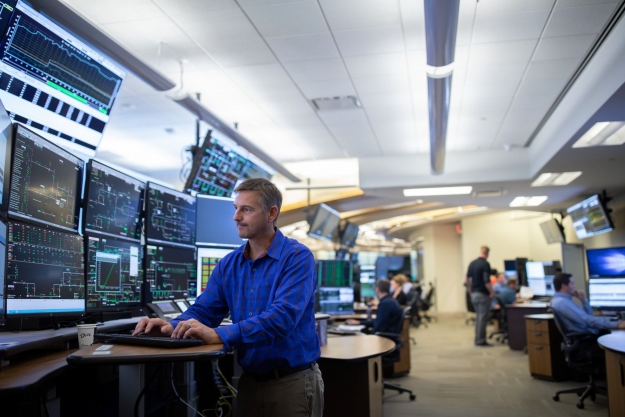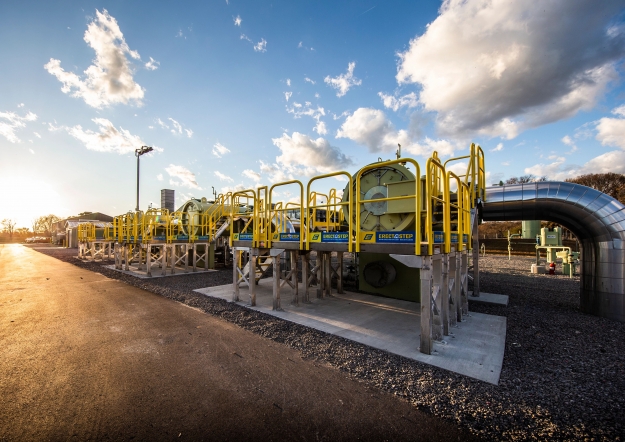Taking the energy transition to the cloud
For more than 70 years, Calgary-based TC Energy has been a leader in the North American energy infrastructure sector, operating more than 93,000 km of gas pipelines and 653bn ft3 of natural gas storage in Canada, the US and Mexico.
It’s also active in the liquids transportation sector, with a 4,900 km pipeline network delivering Alberta crude to refinery centres in the US Midwest, mid-Continent and Gulf Coast.
And it operates seven power generating facilities with a capacity of 4,300 MW, enough to power more than 4mn homes.
Like most other utilities, TC Energy has committed to reduce its greenhouse gas (GHG) emissions intensity by 30% by 2030 and to achieve net zero from its operations by 2050.
To reach those goals, it will focus on five areas to reduce the emissions intensity of its operations while also capturing growth opportunities to meet future energy needs.
The five focus areas – modernising existing systems and assets, decarbonising energy consumption, investing in low-carbon energy and infrastructure, driving digital solutions and technologies and leveraging carbon credits and offsets – will target TC Energy’s scope 1 and 2 emissions, which account for 89% and 11%, respectively of its total emissions.
But it will be digital solutions that help the company make the enhanced business decisions around the way it operates its diverse portfolio of assets and achieve those net zero goals, Roland Muwanga, TC Energy’s vice president energy transition technologies, tells Gas Pathways.
“We are developing a dashboard that puts all of the data associated with our pipeline operations – moving a molecule of gas from Alberta to all of the markets we serve – at the fingertips of our controllers,” he says.
Digital transformation
TC Energy is a pipeline and infrastructure company, not a data company, so it has worked with several outside data services firms – Amazon Web Services was the first, but others are coming in – to address the technology side of the equation, Muwanga says.
“You need two pieces: you need someone who’s really well-versed in the data sciences side, but you also need someone who is well-versed in the pipeline operations side,” he says. “It’s been finding that magic that’s been a little tricky, but one of the biggest opportunities we have going forward is to unlock digital solutions, and we’re now starting to develop our own in-house data science team that has been fanned out to the broader organisation.”
The use of machine learning and artificial intelligence has been particularly useful in pointing to ways to reduce emissions along TC Energy’s vast network of natural gas pipelines, in both Canada and the US. That network consists of 345 compressor stations, 1,100 compressors and 2,500 meter stations, all of them together delivering nearly a million data streams from sensors on equipment and facilities.

TC Energy control centre at the company's Calgary headquarters. (Image: TC Energy)
“When you aggregate all that data across a long pathway – from Alberta to where the gas molecule is going – using machine learning gives us a tool to deliver that molecule with the lowest fuel consumption, and that is our emissions reduction lever,” Muwanga says.
Applying digital solutions, however, is just one way TC Energy is modernising its existing systems, and all the buckets in this focus area are contributing to reducing emissions.
Fugitive emissions from pipeline operations are a key target, representing about 10% of emissions, with controlled venting accounting for about 8%.
Old meets new
Muwanga says technologies have been around for quite some time to control both fugitive and vented emissions, depending on where along the pipeline route they are deployed; in other cases, the technologies are relatively new.
“For instance, the zero emissions vacuum systems that are out in the industry are fairly novel and new and their application to pipeline inspection is new,” he says. “We piloted it here to find the right balance in how it’s deployed - a lot of what’s novel in that is how you adjust your field procedures to deploy that.”
The company also installed Canada’s first methane capture and reinjection skid at a Manitoba compressor station to collect vented emissions and reinject them into the pipeline during maintenance.
And it is installing waste heat recovery units on certain compressors across its footprint to capture heat generated from compressors and use it to generate zero-carbon power.

Cane Ridge natural gas compressor station in Tennessee. (Image: TC Energy)
Leak detection and repair (LDAR) comprises another bucket – TC Energy is continually looking to how it can improve its LDAR programmes, and in 2020, in response to new federal methane reduction regulations in Canada, began implementing an enhanced approach to managing and reducing fugitive emissions from routine operations on its Canadian Mainline, deploying remote sensors at key locations and implementing top-down monitoring using drones and aircraft elsewhere, which can provide support in terms of identifying unplanned methane releases.
“The trickery here is that we have remote sensors telling us where we have a potential leak, but how do we triangulate that, how do we make decisions to address that. It’s another area where we are leveraging the digital platform,” Muwanga says.
Alongside active emissions reduction and avoidance efforts, TC Energy is also moving to decarbonise its own operations, sourcing renewable power to address its scope 2 emissions and gradually shifting its corporate fleet to electric vehicles.
Operationally, a gradual shift is underway to replace natural gas-powered compressors with electrically driven compressors, where that move is feasible. In Canada, about 10% of TC Energy’s compressor inventory is electric; in the US, about 5%.
But a shift to e-drive isn’t an “either/or” question Muwanga says.
“The one you typically hear about is can we move our natural gas through electrically driven compressors, and yes, we do have electrically driven compressors in Quebec today, and we are also deploying them in the US,” he says. “But in a lot of cases, we are looking at deploying them in a dual-drive manner – rather than being purely electrically-driven, they will have a backup system that is natural gas because the grid, at times, can be unreliable.”
A hydrogen future
The move to e-drive is targeting TC Energy’s 2030 goals. Looking beyond 2030, decarbonisation of its fuel requirements could mean hydrogen or some other e-fuel that is synthetically combined from CO2 and hydrogen, Muwanga says.
“Those are all still exploratory – I think what is promising is that our natural gas compressor turbine manufacturers are all committing to having 100% hydrogen-ready turbines by the 2030 timeframe,” he says. “We are looking at whether that is a pathway that is cost effective – as each of these technologies is deployed, we have to make sure they are cost-effective for our customers.”
Still, hydrogen remains a key lever in the evolution of the energy market to a lower carbon future, and TC Energy sees a role for itself in hydrogen infrastructure with its experience in fuel transportation, power generation and gaseous fuel storage.
It has partnered with Irving Oil in New Brunswick to assess the opportunity to support the development of low-carbon hydrogen, and in the US it has entered into a strategic collaboration with truck manufacturer Nikola to develop infrastructure that would support Nikola’s roll-out of zero-emission heavy-duty trucks powered by hydrogen fuel cells.
“A key objective of the collaboration is to establish hubs producing 150 tonnes or more of hydrogen per day near highly traveled truck corridors to serve Nikola’s planned need for hydrogen to fuel its Class 8 fuel cell electric vehicles within the next five years,” TC Energy says in its latest GHG emissions reductions plan.
Hydrogen may be a few years away from making a real dent in TC Energy’s emissions reduction efforts; in the here and now, investments in renewable energy generation and pumped storage are emerging alongside renewable natural gas (RNG) opportunities and carbon capture, utilisation and storage (CCUS) initiatives.
It has moved RNG on its systems for more than 20 years, and there are currently 12 RNG interconnects across its footprint. In 2021, it doubled its US RNG volumes to 4bn ft3 and across both its US and Canadian systems moved 8bn ft3 in 2021, with a target to increase the total to 30bn ft3/year.
Although TC Energy has moved RNG for others, it hasn’t ever produced its own, but that is changing. In 2022, it partnered with iconic distiller Jack Daniels in a C$29.3mn investment to support a new RNG facility being added to the distiller’s Lynchburg, Tennessee distillery, an example of the kind of “unique partnerships” TC Energy is exploring to unlock decarbonisation opportunities, Muwanga says.
Another is a partnership with Pembina Pipeline to develop the Alberta Carbon Grid, which would be capable of transporting to sequestration sites an estimated 20mn metric tons/year of CO2, which represents about 10% of Alberta’s total industrial emissions.
“A lot of the partnerships we are contemplating in this space are quite unique – they are not partnerships we would have looked at before,” Muwanga says. “The companies that are able to forge those partnerships and relationships in a very robust manner will be the ones that take a leadership role through the energy transition.”
The latest in a continuing series featuring the work of Gas Pathways Platform partners in advancing natural gas innovation.



